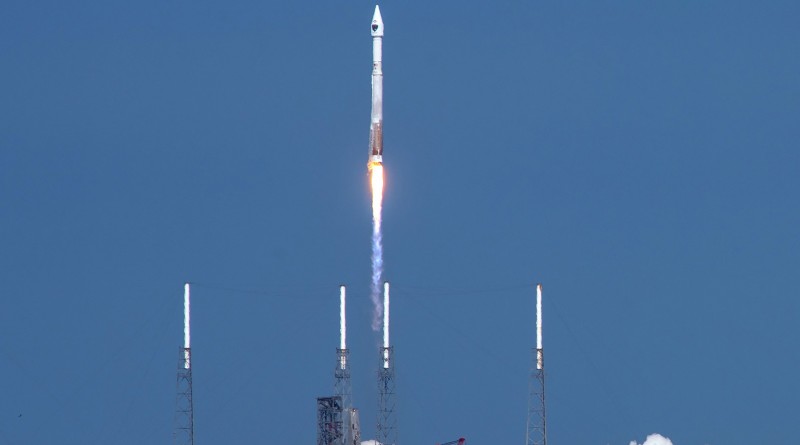Atlas V’s successful Launch of GPS IIF-11 closes out busy Month at United Launch Alliance
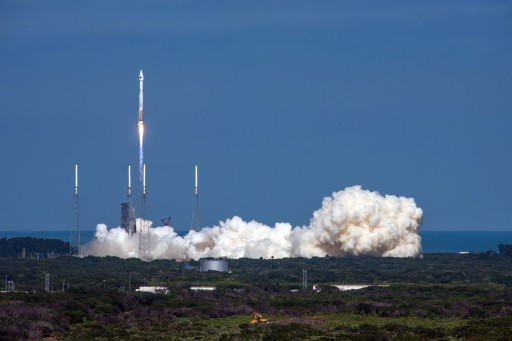
The Atlas V workhorse rocket is three-for-three in October, successfully conducting its third mission of this calendar month on Saturday and setting a new record in the ever increasing pace of United Launch Alliance missions. Lifting off from Cape Canaveral at 16:13 UTC, Atlas V took to the skies to deliver the penultimate Block IIF satellite to orbit for the Global Positioning System to an orbit over 20,000 Kilometers in altitude in the continued modernization effort of the world’s most used satellite navigation system.
Packing three launches of the Atlas V into a single month had never been achieved before, but United Launch Alliance has emphasized its gradual progress in cutting launch processing time for the Atlas V. Maturing as a system, Atlas V was able to cut time-consuming tests such as the Wet Dress Rehearsal from its launch preparations flow and new techniques such as vertical rollout and integration of Centaur upper stages already integrated with their associated adapters cut further processing days from the schedule.
United Launch Alliance already cut the processing time for Atlas V in half since the start of the program and looks to further accelerate the launch preparations flow while keeping up the rocket’s excellent reliability. Its busiest month to date started for the Atlas V on October 2nd when launching the Morelos 3 communications satellite to Geostationary Transfer Orbit for Mexico. This launch was followed up by a mission from Atlas’ west coast pad at Vandenberg Air Force Base on October 8, delivering to orbit the classified NROL-55 payload for the United States National Reconnaissance Office.
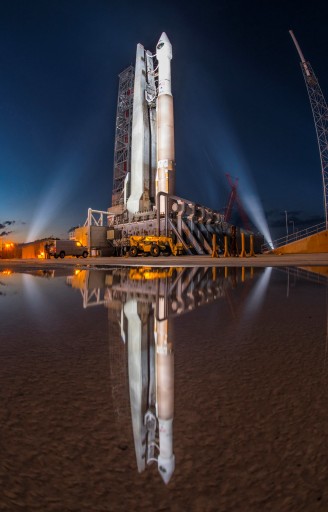
After Morelos 3 departed the east coast pad of Atlas V, work immediately began to turn the facility around for the GPS mission, then aimed for liftoff on October 30. Stacking of the Atlas V rocket commenced on the 12th with the installation of the Common Core Booster First Stage on the Mobile Launch Platform followed by the integration of the Centaur upper stage. GPS IIF-11, already encapsulated in its protective 4-meter payload fairing, took its place atop the Atlas V on the 21st for a week of integrated testing before pressing into launch operations.
Atlas V moved to the launch pad on Thursday and took its place next to the newly assembled Crew Access Tower which made significant progress since the October 2 launch as all seven tiers were now in place, marking the completion of the basic structure of the tower.
Liftoff had to be postponed from Friday because of a leaky valve within the launch pad’s water suppression system which required replacement, completed by the team overnight.
GPS IIF-11 is the penultimate satellite in the current Block IIF batch of a dozen satellites launched between 2010 and 2016 as part of the regular replenishment of the GPS constellation and its modernization. GPS was inaugurated in 1978 and to date has seen 71 satellite reaching Medium Earth Orbit, including GPS IIF-11. The new Boeing-built Block IIF satellites, each weighing in at 1,630 Kilograms and costing $245 million, feature upgraded clocks with higher accuracy, new signals for increased navigation precision and coverage, and better security as well as a longer in-orbit lifetime.
The heart of each GPS satellite is a redundant set of atomic clocks that deliver extremely precise timing signals which are then sent to Earth where they are received by terminals using four signal inputs to calculate the user’s position through the difference of signal travel time from the satellites in their different orbital positions. The GPS constellation requires at least 24 operational satellites to ensure global coverage, 24 hours a day.
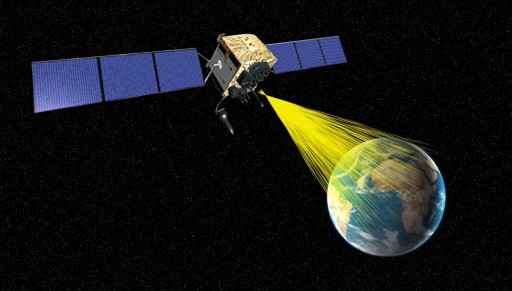
GPS is used all over the world in navigation systems including cellphone-based systems. Furthermore, GPS comes into play whenever precise timing information is needed, but the constellation has also found applications off the planet. GPS is used for the onboard determination of satellite orbits, spacecraft use it for navigation during rendezvous and GPS signals are used to study the structure of Earth’s atmosphere. The newer generations of GPS satellites also fulfill search and rescue functions.
The Block II phase of the GPS constellation was started in 1989 and has seen a total of 57 satellites delivered to orbit until this day. One more Block IIF satellite will head up atop an Atlas V in early 2016 to clear the way for the next step for the Global Positioning System – the inauguration of the Block IIIA satellites in 2017.
Built by Lockheed Martin, the upcoming generation of GPS satellites will add even more navigation signals, both for use by the civilian sector and the military including additional Safety of Life signals. Aside from a better accuracy, the Block III satellites are also expected to remain in service longer than the current satellites which are known to surpass their expected lifetimes on a regular basis.
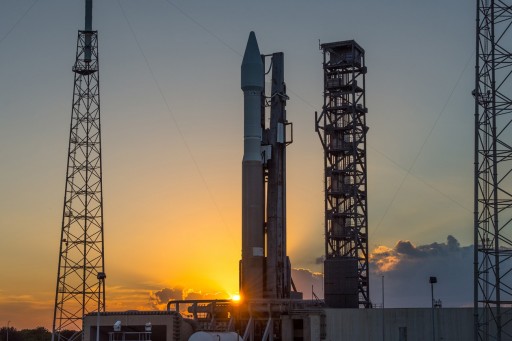
Topped with the GPS IIF-11 satellite, Atlas V headed into its lengthy countdown operation at 9 UTC on Saturday, starting with the activation of the rocket and all of its systems while teams at the pad were still busy buttoning up the Atlas V rocket and ground facilities. For the first hours of the countdown, Atlas V was put through its paces, undergoing detailed systems checks to confirm all subsystems were ready to support the mission. After the setup of purge systems, communication checks and Flight Termination System testing, the team departed the launch pad and cleared the complex for propellant loading operations.
Atlas V headed into its tanking operation at T-2 hours when the countdown came out of a built-in hold. Loaded ahead of the count was the Rocket Propellant 1 tank of the Common Core Booster that received 94,600 liters of refined Kerosene, leaving only the cryogenic tanks to be loaded. Over the course of a two-hour sequence, the Centaur upper stage received 15,700 liters of Liquid Oxygen and 48,100 liters of Liquid Hydrogen while the CCB was filled with 185,500 liters of supercold LOX. With tanking complete, the launch team headed into the final preparations for launch, loading a refined flight software version into the Atlas V and completed a last set of checkouts before clocks began holding at T-4 minutes.
During the final hold of the countdown, GPS IIF-11 switched to battery power and all teams were polled for a Go/No Go to press into the Terminal Countdown Sequence. With a clean vehicle, pristine weather and a clear range, all stations were able to report a GO and Atlas V headed into its automated countdown that included the final steps to transition the rocket to a launch configuration, notably the pressurization of tanks, the transfer of internal power and the handoff to Atlas V’s computers leading up to the ignition of the RD-180 main engine.
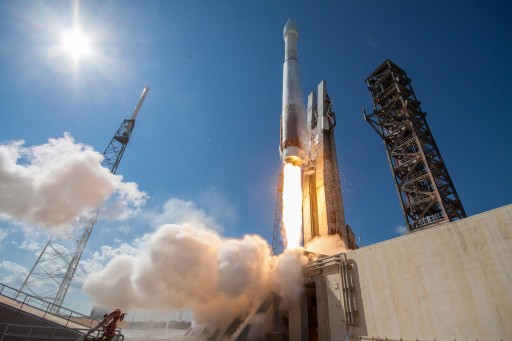
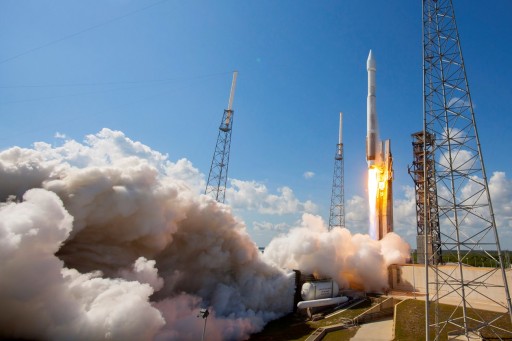
Leaping off its launch pad at Space Launch Complex 41 at 16:13:00 UTC, the 58-meter tall Atlas V swung to the north-east for a flight across the Atlantic, firing its first stage for a little over four minutes, making use of the raw power delivered by the Russian-built, two chamber RD-180 engine that generated a vacuum thrust of 422 metric-ton-force. Under the loud thunder of its main engine, Atlas V pushed through the sound barrier 78 seconds after launch and encountered Maximum Dynamic Pressure 12 seconds later.
Successfully concluding its burn, the Common Booster Core handed off to the Centaur upper stage for an initial burn of its RL-10C engine, delivering 11,200 Kilogram-force of thrust to boost the stack to orbit. It was a rather long burn for the Centaur, firing the cryogenic RL-10 engine for a little over 12 and a half minutes to achieve an elliptical parking orbit.
Data displayed in real time showed Centaur in an orbit of 167 by 20,290 Kilometers at an inclination of 55 degrees. In this orbit, the upper stage was set for a long coast of three hours to climb all the way up to apogee so that the second engine burn could act as a circularization maneuver. The coast took the vehicle across the Atlantic, over the UK, a large portion of Central and Eastern Europe, the Black Sea, the Arabian Peninsula and out over the Indian Ocean to head to a position to the south of Australia for the second burn.
While still at a low altitude, Centaur was spotted passing over Europe where the sun had just set, creating favorable viewing conditions of the stack which was reported to be easily visible to the naked eye.
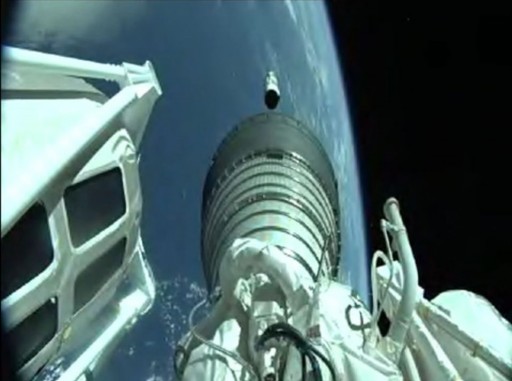
RL-10C re-ignited three hours and 17 minutes into the flight on a planned 87-second burn to raise the perigee of the orbit and position the stack in a circular orbit. GPS IIF-11 was aiming for the standard insertion orbit of 20,459 Kilometers at an inclination of 55 degrees. Spacecraft separation occurred three hours and 23 minutes into the mission and confirmation of launch success was provided by United Launch Alliance a short time later.
This marked the 59th launch of Atlas V since its inauguration in 2002, the 29th in the 401 configuration. It was the 641st launch of a vehicle named Atlas, dating back to the very early beginnings of America’s space endeavors in 1957.
After a very busy month of October, United Launch Alliance can look forward to a slower pace to close out this year. Only one more launch is lined up for ULA, the Cygnus Orb-4 Cargo Mission to the International Space Station, set for liftoff atop an Atlas V rocket on December 3.

